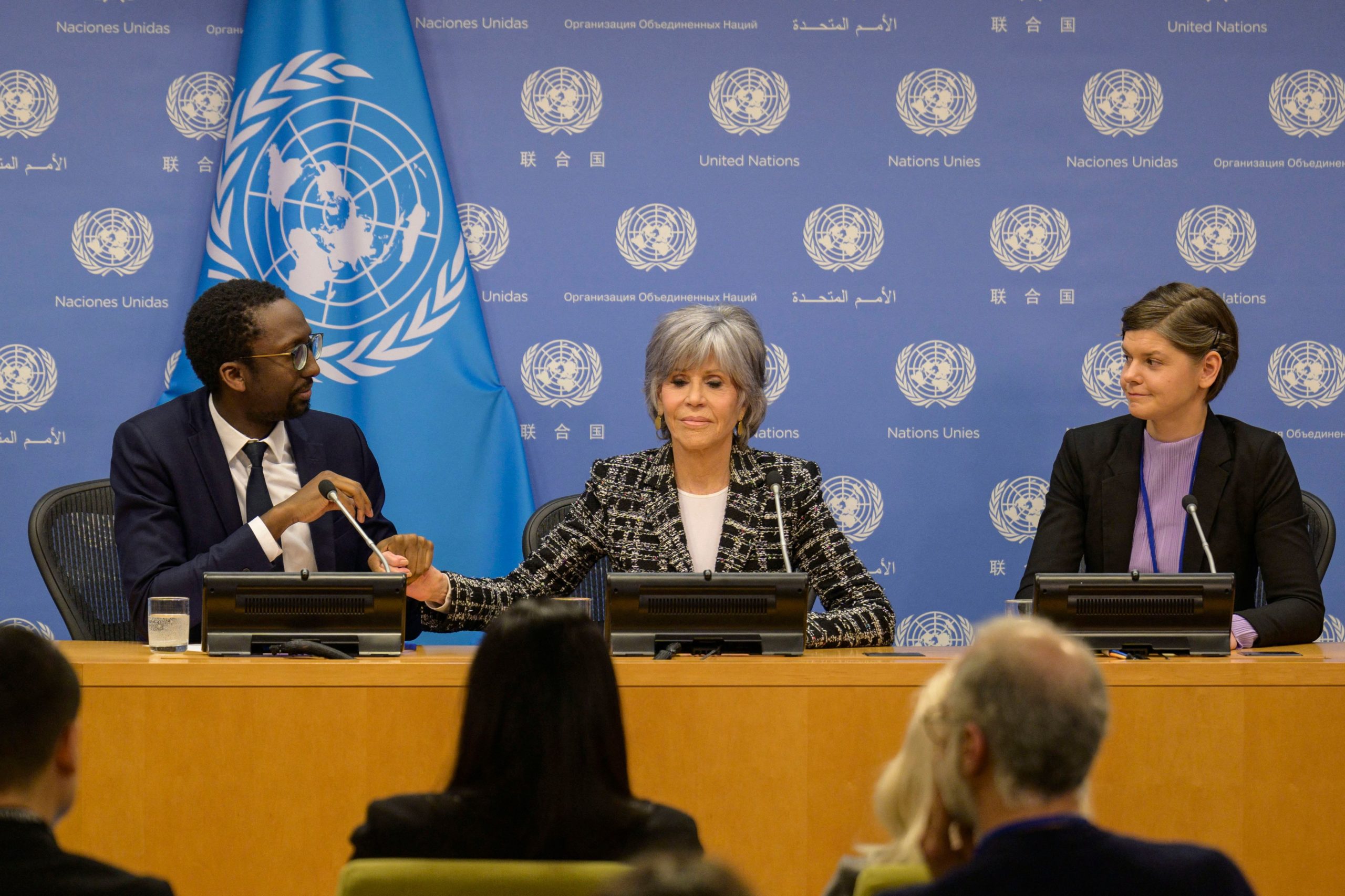More than 190 countries agreed to a historic treaty intended to protect marine life at the United Nations (UN) headquarters in New York City Saturday.
The High Seas Treaty designates 30% of the world’s oceans as marine-protected areas by 2030, increases funds dedicated to marine conservation, and creates new rules for mining. By taking these measures, the countries hope to mitigate the extinction of marine life, according to the BBC.
A marine-protected area (MPA) is “a geographically defined marine area that is designated and managed to achieve specific long-term biodiversity conservation objectives and may allow, where appropriate, sustainable use provided it is consistent with the conservation objectives,” according to the UN draft of the agreement.

French Secretary of State for the Sea Hervé Berville, US actress and activist Jane Fonda, and Ocean and Polar advisor with Greenpeace Laura Meller participate in a press conference on the High Seas Treaty at the United Nations headquarters in New York City on February 21, 2023. (Photo by ANGELA WEISS/AFP via Getty Images)
For example, MPAs would be subject to restrictions on overfishing and pollution, which are the two most influential factors of extinction.
Greenpeace called the High Seas Treaty the largest conservation agreement ever. It took 38 hours of deliberation (and almost two decades of planning and discussion) before finalizing their agreement on the text of this treaty, according to Axios.
The negotiations stalled for so long due to arguments related to funding and fishing rights. It is the first agreement of its kind since 1982 when countries adopted the UN Convention of the Law and the Sea, which established an area called the high seas, according to the BBC. (RELATED: UN Panel Says Ozone Layer Slowly Recovering From Damage)
High seas cover almost half of the planet and are classified as international waters where every country has the right to fish, ship, and conduct research. However, in the 1982 agreement, only 1.2% of these high seas areas were regulated.
All content created by the Daily Caller News Foundation, an independent and nonpartisan newswire service, is available without charge to any legitimate news publisher that can provide a large audience. All republished articles must include our logo, our reporter’s byline and their DCNF affiliation. For any questions about our guidelines or partnering with us, please contact licensing@dailycallernewsfoundation.org.


